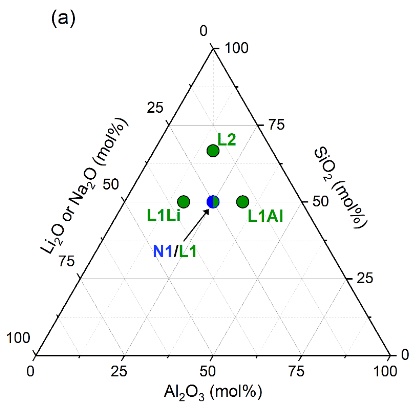Ask for a reprint
email :
* Give your email
2022
ACL
|
A.Zandona, S.Ory, C.Genevois, E.Véron, A.Canizarès, M.J.Pitcher, M.Allix, 'Glass formation and devitrification behavior of alkali (Li, Na) aluminosilicate melts containing TiO2', J. Non-Cryst. Solids 582 121448 (2022) doi:10.1016/j.jnoncrysol.2022.121448
The impact of TiO2 additions on the quenchability of melts derived from the stoichiometry of spodumene (LiAlSi2O6), eucryptite (LiAlSiO4) and nepheline (NaAlSiO4) was investigated by containerless melting. The results reveal a compositional dependence (Al2O3/SiO2 and M2O/Al2O3 ratios, M = Na or Li) of the role of TiO2 during devitrification. Amorphous samples incorporating up to 10 mol% TiO2 could be produced, above which devitrification invariably took place. Interaction of TiO2 with other glass components (such as Al2O3 and Na2O in nepheline glass) perceivably reduced glass stability, while eucryptite and spodumene glasses appeared only affected to the extent to which nanosized TiO2 polymorphs (TiO2(B), anatase and rutile) served as heterogeneous nucleation sites for quartz solid solutions, in which we inferred a substantial incorporation of Ti4+. A reduction in SiO2 content and a preference for peraluminous compositions stand out as viable compositional strategies to foster the glass-forming ability of TiO2-rich aluminosilicate melts.
|

|